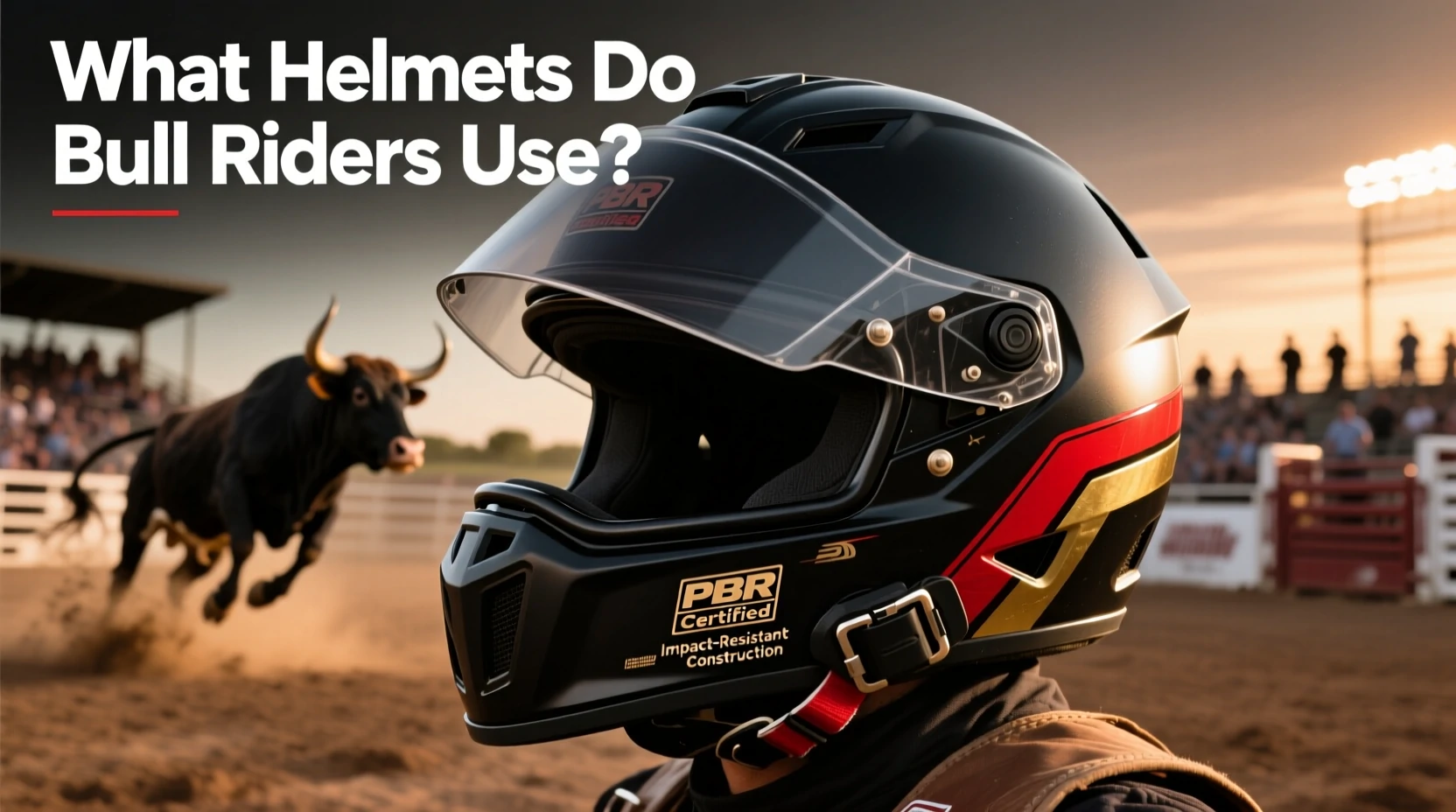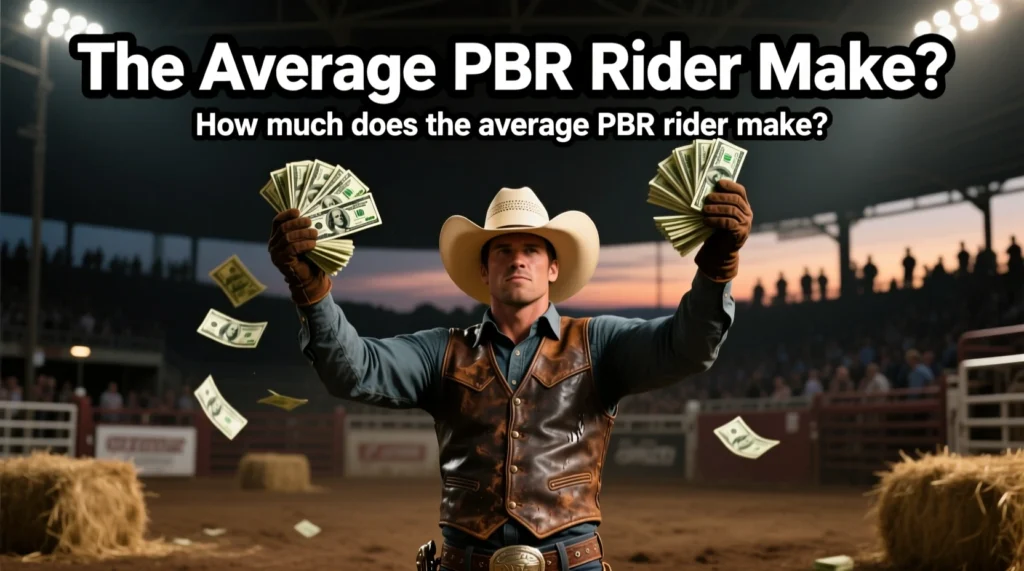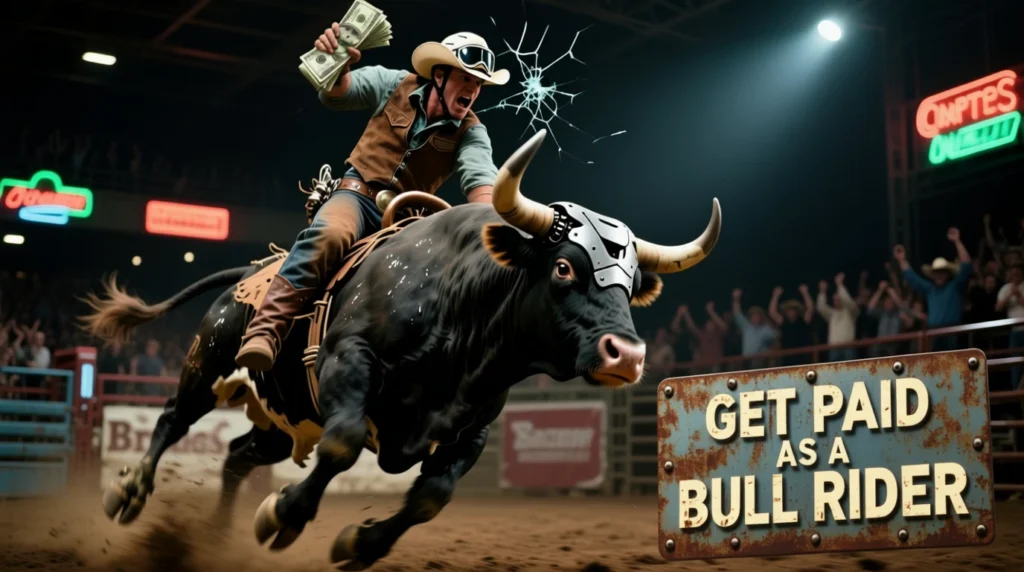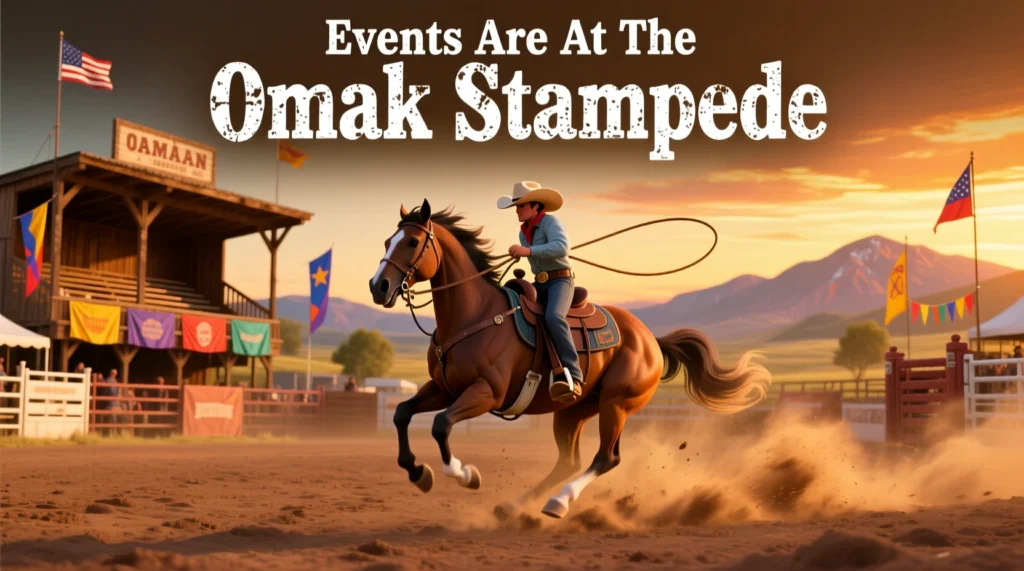Discover What Helmets Do Bull Riders Use? in 2025. 100X, hockey helmets, safety certifications, PBR requirements, and how helmets reduce head injuries in bull riding by 50%.
Bull riding is one of the most dangerous sports in America, with head and facial injuries accounting for more than 27 percent of all serious rodeo injuries. For riders attempting to stay atop a 1,800-pound bull for eight seconds, the question is “What helmets do bull riders use?” It’s not just about equipment – it’s about survival. Research shows that wearing a helmet reduces head and facial injuries by nearly 50 percent, making choosing the right headgear important for both amateur and professional competitors.
This comprehensive guide examines the reliance on helmets by professional bull riders, the safety standards that matter, and why helmet adoption has gone from being rare to increasingly common in modern rodeo culture.
Table of Contents
Understanding Bull Riding Helmet Requirements
The Professional Bull Riders (PBR) organization implemented a landmark safety rule in 2013 that fundamentally changed the sport: All competitors born on or after October 15, 1994, must wear a full-face bull riding helmet during competition. Riders born before that date were grandfathered in and could choose to ride with a protective face mask under their hats or with just the traditional cowboy hats.
This age-based mandate reflects a generational shift in safety culture. By the early 2010s, most incoming riders already voluntarily wore helmets, having grown up with protective headgear as standard equipment. Today, at major PBR events, it is common to see more than half of all competitors wearing helmets, a percentage that is increasing annually.
The medical justification for mandatory helmets is compelling. Bull riding on the premier PBR Tour has an injury rate of about one in every 15 riders, with 15 percent of those injuries being concussions and facial fractures representing the most common surgical interventions. Public health researchers found that riders wearing certain types of helmets suffered about 50 percent fewer head and facial injuries than unprotected riders.
Top Bull Riding Helmet Brands and Models
1. 100X Helmets: Purpose-Built for Bull Riding
The 100X Helmet represents the first company to design a helmet specifically for bull riding from the ground up, rather than adopting equipment from other sports. Their flagship model has specific features designed for the unique impacts experienced in rodeo:
- Weight: 2.6 pounds (1.1 kg), significantly lighter than a modified hockey helmet.
- Face mask: Titanium alloy construction for strength without excess weight.
- Frame: Carbon fiber face frame and chin cup for maximum protection and minimal bulk.
- Fastening system: Noggin Lox next-generation sporting goods fastener, exclusive to the 100X.
- COM-LOX system: Proprietary connection technology for a secure fit.
- Price range: $491-$500 for professional models.
Real-world testing validates the 100X’s safety capabilities. One rider reported walking away from a bullseye with only a bent face mask and a bruised cheek – injuries that would have been devastating without the protection of a helmet.
2. Modified Hockey Helmets: The Industry Standard
Before purpose-built bull riding helmets were invented, riders adapted ice hockey helmets for rodeo use, and this practice is still widespread today. Popular hockey helmet brands include:
CCM Hockey Helmets: The CCM Tacks series helmets feature advanced impact absorption through D3O Smart Foam and 3D Nest Tech, originally designed for hockey collisions. When modified with enhanced face shields, these helmets offer substantial protection at a lower price point than specialized bull riding equipment.
Bauer Hockey Helmets: Bauer’s RE-AKT series features multi-density foam liners and an adjustable fitting system that bull riders appreciate. Full face protection, internal padding, and tool-free adjustability make these hockey helmets ideal for rodeo adaptations.
Both RodeoMart and Beast Master brands primarily sell modified CCM and Bauer hockey helmets with enhanced face protection designed for bull riding impacts. The Bestmaster 155 helmet is priced at $314.95, while entry-level React 55 models cost around $99.95.
3. Specialized Bull Riding Helmet Brands
II Tough Helmet: Resembling a hockey helmet but with a better mask and superior ear protection, II Tough helmets are popular with competitive riders. They represent an evolution beyond standard hockey equipment while maintaining a familiar fit and comfort.
Ballistic Helmets: These helmets feature a two-piece adjustable shell with a molded chin cup, a spherical shape to improve impact deflection, and a dual-density synthetic foam liner. The lightweight construction and prices around $179.99-$195.95 make them accessible to amateur competitors.
Bullhead Helmet: Likely derived from the former Invincibull helmet line, these offer full-face protection with A3 steel cages and high-density polypropylene shells.
Master Bulls Helmet: Brazilian-made helmet featuring a one-piece polypropylene shell, thickened EVA liner foam, and a full steel metal mask. Available in multiple sizes for head circumferences from 22.5″ to 24″, competitively priced for international markets.
Critical Safety Standards and Certifications
ASTM/SEI Certification
The American Society for Testing and Materials (ASTM) establishes testing standards that helmets must meet to ensure adequate protection. For bull riding, the relevant standard is ASTM F2530: Protective End Face Guard for Bull Riding.
The Safety Equipment Institute (SEI) certifies helmets to these ASTM standards through independent laboratory testing. Certification requirements include:
- Impact Testing: Helmets must pass 14+ safety tests measuring impact resistance, with forces no greater than 300g transmitted to the skull.
- Penetration Resistance: Materials must withstand impacts from sharp objects simulating horns and hooves
- Retention System Testing: Straps and buckles secure the helmet to the head during violent movement.
- Environmental Durability: Helmets are tested again after freezing to -20°F, heating to over 120°F, and submerging in water for 6+ hours.
ASTM/SEI certification is mandatory for helmets used in many rodeo associations and is considered the gold standard for bull riding safety equipment.
Essential Helmet Features for Bull Riders
1. Full-Face Protection
Carbon fiber or steel face shields significantly reduce the risk of facial injuries. According to bull riding safety experts, face shields reduce the risk of facial injuries by more than 50 percent. The cage must be strong enough to withstand direct impacts from the bull’s head, horns, and hooves while maintaining visibility.
2. Multi-Density Foam Liners
Shock-absorbing liners with multiple foam densities distribute impact energy more effectively across the skull than single-density materials. Advanced materials like D3O Smart Foam react to impact velocity, remaining flexible during normal movement but instantly stiffening upon impact.
3. Lightweight Construction
Helmets weighing less than 3 pounds prevent neck fatigue during intense 8-second rides and allow riders to maintain balance and reaction speed. At 2.6 pounds, the 100X and similar lightweight models enable performance without compromising protection.
4. Adjustable Ventilation
Look for 6+ airflow vents to prevent overheating during competition and practice sessions. Proper ventilation reduces sweat buildup that can compromise fit and comfort during extended wear.
5. Custom Fit Systems
The tool-free adjustment mechanism, dial fit system, and interchangeable padding ensure the helmet stays securely in place during violent boarding movements. Proper fit is essential – helmets that shift during impact provide inadequate protection.
Price Ranges and Investment Considerations
Bull riding helmets span a significant price spectrum based on materials, certifications, and brand positioning:
Entry-level ($99-$180): Modified hockey helmets and basic ballistic models provide basic protection for youth and amateur riders starting their careers.
Mid-range ($180-$320): Purpose-built helmets like the II Tough, improved Beastmaster models, and modifications of standard hockey helmets offer better materials and better face protection.
Professional-grade ($320-$500+): Specialized helmets like the 100X Alpha and premium certified models feature titanium components, carbon fiber construction, and advanced impact-absorbing technology.
The Cultural Shift: From Hats to Helmets
Bull riding traditionally celebrated the image of cowboys in felt stetsons, making helmet adoption a significant cultural challenge. In the 1990s, only riders recovering from serious facial or head injuries wore protective headgear, usually leather face masks with metal bars worn under their hats.
By 2003, helmeted riders remained a minority but were more common than ever, with younger competitors who had grown up riding with helmets for added protection leading the change. The change accelerated in the 2000s, especially in the latter years of the decade.
A key moment came when W. Harris became the second rider in three years to win the National Finals Rodeo Bull Riding Championship wearing a helmet. At a 2009 Baltimore event, 23 of 45 riders were wearing helmets – the first time the number of riders wearing helmets outnumbered those who didn’t. These milestones proved that helmets don’t affect competitive performance.
Expert opinion: “This is huge,” said Don Andrews, executive director of the medical team with the Professional Rodeo Cowboys Association, regarding the increase in helmet adoption. “It makes sense to wear a helmet.”
Addressing Common Concerns
Do Helmets Impair Riding Ability?
Only 31% of bull riders always wear helmets, with some citing concerns that helmets limit vision or impair balance. However, championship-winning riders demonstrate that helmets do not prevent success at the highest competitive levels.
Secondary Injuries
Some riders report secondary injuries such as painful ear lacerations and ovulations when the helmet rotates during impact, trapping ear tissue in the helmet cutout. Modern helmet designs address this with better ear protection and more secure retention systems.
Limitations of Protection
Although helmets significantly reduce head and facial injuries, they cannot prevent all trauma. Protective vests and helmets are good at preventing injuries from falls and kicks while riding, but do less to prevent crushing injuries when riders are stopped by a curb or fence. Helmet protection is most effective against direct impacts rather than rotational forces or crushing trauma.
Maintenance and Replacement Guidelines
Replacement after impact: Any helmet that sustains a significant impact should be replaced immediately, even if the visible damage is minimal. The internal foam structure can be compromised, reducing future protective capabilities.
Five-year maximum lifespan: Equestrian and bull riding helmets should be replaced every five years, regardless of condition. The material degrades over time from sweat, UV exposure, and temperature fluctuations.
Regular inspection: Check for cracks in the shell, loose padding, worn straps, and compromised retention systems. Any deterioration warrants immediate replacement.
Proper storage: Store helmets in cool, dry areas away from direct sunlight and extreme temperatures. Do not leave helmets in vehicles where heat can degrade the material.
Frequently Asked Questions for What Helmets Do Bull Riders Use?
Are helmets mandatory in PBR?
Yes, but only for riders born on or after October 15, 1994. Older riders can choose whether to wear helmets, face masks under hats, or traditional cowboy hats.
How much do bull riding helmets reduce injuries?
Research shows that using a helmet reduces head and facial injuries by about 50 percent compared to riding without head protection.
What’s the difference between bull riding helmets and hockey helmets?
Purpose-built bull riding helmets like the 100X feature a lighter weight (2.6 lbs vs. 3+ lbs), a titanium face mask designed for horn impacts, and special retention systems. Hockey helmets are designed for puck and stick impacts rather than hooves and horns.
How much do professional bull riding helmets cost?
What certification should I look for?
Look for ASTM F2530 certification and SEI approval, which ensure that helmets meet rigorous testing standards for bull riding impacts.
Can you wear hockey helmets for bull riding?
Yes, many professional bull riders use modified CCM or Bauer hockey helmets with extended face shields. Brands like RodeoMart and Beast Master sell hockey helmets specifically designed for bull riding.
Protection That Saves Lives
The evolution of bull riding helmets from a rare novelty to increasingly standard equipment represents rodeo’s most significant safety advancement. With a proven 50% reduction in head and facial injuries, modern helmets combining ASTM/SEI certification, lightweight construction, full face protection, and advanced impact-absorbing materials provide life-saving protection without compromising competitive performance.
Whether choosing a purpose-built helmet like the 100X, a modified hockey helmet from CCM or Bauer, or rodeo-specific brands like Bullistic and II Tough, today’s bull riders have access to safety equipment that previous generations never imagined. As helmet technology continues to advance and younger riders grow up considering helmets a necessity rather than an option, the bull riding culture is shifting to prioritize safety while maintaining the thrilling, high-octane nature of the sport.
For everyone involved in bull riding – from young competitors to professional athletes – the question is not whether to wear a helmet, but which helmet provides the best combination of protection, comfort, and performance for their specific needs.








